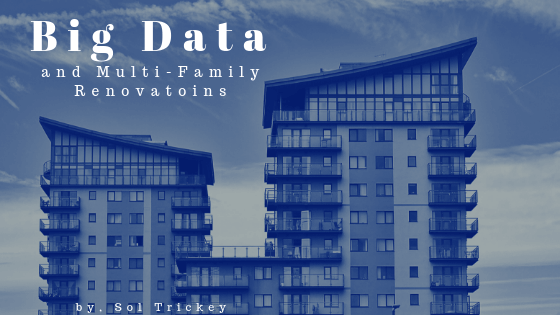These days it seems like the “it” topic is big data. The creation of blockchain along with new and innovative ways to collect and record information is creating exciting conversations across all industries and property development is no exception. Contractors and developers everywhere are discussing the positive impact big data will have on project timelines, accuracy, and communications – especially as it pertains to multifamily units.
The successful tracking of the renovation of multifamily units has long been a sticking point in the industry. Balancing the interests of investors with the needs of a community while also maintaining a budget and ensuring sustainability can create massive headaches. The implementation of big data has the potential to minimize these sore spots, making multi-family unit management less stressful. Here’s how.
Centralized Workflow
A centralized workflow is the first step in reigning in multi-family renovation projects. Because there are so many parties that require access to any given project (asset managers, executives, developers, construction managers, and leasing agents), it makes sense to create a system that allows each party to track and manage their own aspects.
As an added benefit, a centralized workflow system shares a single, functional set of guidelines for any given project, thereby guaranteeing that all parties are working under a clear set of rules, regulations, and instructions. Teams can expect to minimize questions and confusion across planning, execution, and analysis of their projects.
Project Analytics
Execution and analysis are critical when it comes to multi-family renovation projects. Crews and managers need to be able to track timelines, implementation, and follow-up for every job they are involved in. Big data allows for performance tracking using efficiency and effectiveness measures. When you roll in statistics for planning, cost, and subsequent rental, you are officially looking at a comprehensive analysis of a massive scale project.
The data you collect will then help you better understand exactly which items have an affect on your planning and processes key performance indicators like Return on Investment. Understanding these analytics could potentially improve your workflow for the next project. Expectations can be clearly defined and communicated in the centralized workflow, and then consistently reanalyzed for process improvement.
It may take a while to integrate big data software and practices across your current system and, until the practice is ubiquitous, it could be costly. That being said, I am certain that forgoing this innovative technology would be a huge mistake in a development world full of demands that are constantly evolving.
